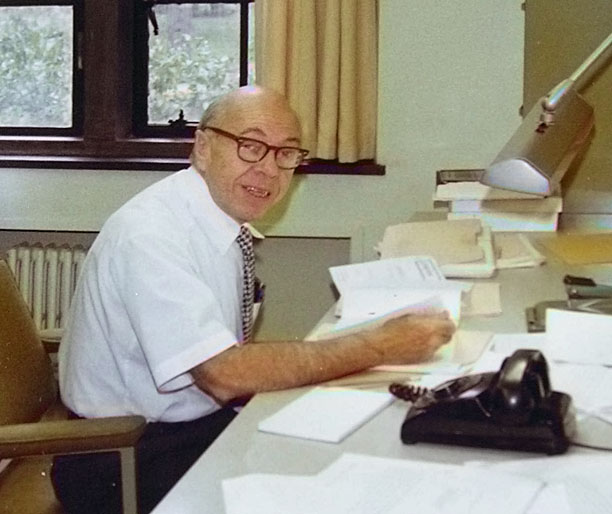- Ugo Fano
Infobox Scientist
box_width = 300px
name = Ugo Fano
image_size = 300px
caption = Ugo Fano (1912-2001). Photo taken in 1978.
birth_date = birth date|1912|7|28|mf=y
birth_place =Turin, Italy
death_date = death date and age|2001|2|13|1912|7|28|mf=y
death_place =Chicago, Illinois
residence = flag|USA
citizenship = flag|USA|name=American
nationality =
ethnicity = Italian-Jewish
fields =Physicist and Biophysicist
workplaces =University of Chicago Carnegie Institute National Bureau of Standards University of Rome University of Leipzig
alma_mater =University of Turin
doctoral_advisor =Enrico Persico
academic_advisors =Enrico Fermi Werner Heisenberg
doctoral_students =Chris Greene Charles W. Clark Gerald Gabrielse
notable_students =
known_for =Feshbach–Fano partitioning Fano resonance Fano factor Fano effect Fano–Lichten mechanism Beutler-Fano profile
author_abbrev_bot =
author_abbrev_zoo =
influences =Giulio Racah Emilio Segre Salvatore Luria
influenced =
awards =Enrico Fermi Award (1995)
footnotes = His father wasGino Fano , he is the brother ofRobert Fano , and he is the cousin ofGiulio Racah .Ugo Fano (
July 28 ,1912 –February 13 ,2001 ) was an Italo-American physicist, a leader intheoretical physics in the 20th century.Childhood and origin
He was born in
Turin ,Italy .His father was
Gino Fano , a prominent mathematician, and his brother,Robert Fano , is an eminent professor emeritus of electrical engineering atMIT . Fano's wife, Lilla Fano, a teacher, co-authored with him a well-known book on atomic and molecular physics, "Physics of Atoms and Molecules" (1959). Appendix III of this book presents an elementary description of the collision of two charged particles, which was used byRichard Feynman in lectures that have been published as . An expanded version of this book was subsequently published as "Basic Physics of Atoms and Molecules" (1972). Fano's cousin,Giulio Racah , made great contributions to the quantum theory of angular momentum (well-known as Racah algebra), and wrote a concise monograph with Fano on the subject ("Irreducible Tensorial Sets", 1959).Universitary studies
Ugo Fano earned his doctorate in
mathematics at theUniversity of Turin in 1934, underEnrico Persico , with a thesis entitled "Sul Calcolo dei Termini Spettrali e in Particolare dei Potenziali di Ionizzazione Nella Meccanica Quantistica" ("On the Quantum Mechanical Calculation Spectral Terms and their Extension to Ionization"). As part of his PhD examination he also made two oral presentations entitled: "Sulle Funzioni di Due o Più Variabili Complesse" ("On the functions of two or more complex variables") and "Le Onde Elettromagnetiche di Maggi: Le Connessioni Asimmetriche Nella Geometria Non Riemanniana."Rome stay and collaboration with Enrico Fermi
Fano worked with
Enrico Fermi in Rome, where he was a senior member of 'I ragazzi di Via Panisperna'. It was during this period that with the urging of Fermi, Fano developed his seminal theory of resonant configuration interaction (Fano resonance profile), which led to two papers (U. Fano,Nuovo Cimento 12, 154 (1935) [http://nvl.nist.gov/pub/nistpubs/jres/110/6/j110-6fan.pdf (English translation)] , and U. Fano, [http://prola.aps.org/abstract/PR/v124/i6/p1866_1 Phys. Rev., 124, 1866] (1961)). This latter publication is one of the most cited articles published in ThePhysical Review .Collaboration with Werner Heisenberg
Fano spent 1936–37 with
Werner Heisenberg inLeipzig .Leaving Italy
He immigrated to the
United States in 1939. His initial work in theU.S. was onbacteriophages and pioneering work in the study ofradiological physics , specifically, the differences in the biological effects ofX-rays andneutrons .National Institute of Standards and Technology
After serving a stint at the
Aberdeen Proving Grounds duringWorld War II , he joined the staff of theNational Bureau of Standards (NBS - now theNational Institute of Standards and Technology ), where he was hired as the first theoretical physicist on the NBS staff.Chicago University
He served there until 1966, when he joined the faculty of
physics at theUniversity of Chicago . There he trained, until the early 1990s, a large body of graduate students and postdoctoral research associates who now occupy leading positions in theoretical atomic andmolecular physics in the United States, Europe, and Japan.Scientific legacy
Ugo Fano had a major impact in sustained work over six decades on
atomic physics andmolecular physics , and earlier onradiological physics. Most areas of current research in these subjects reflect his fundamental contributions. Such phenomena as the Fano resonance profile, theFano factor , theFano effect , and theFano–Lichten mechanism bear his name.Memberships
Ugo Fano was a member of the National Academy of Sciences, a fellow of the
American Academy of Arts and Sciences , theAmerican Physical Society and theRoyal Society of London .Prizes
He was awarded the
Enrico Fermi Award of theU.S. Department of Energy in 1995. His most-cited work is the 1961 paper mentioned above.External links
* [http://www.nature.com/nature/journal/v410/n6825/full/410164a0.html Obituary in "Nature"]
Wikimedia Foundation. 2010.
